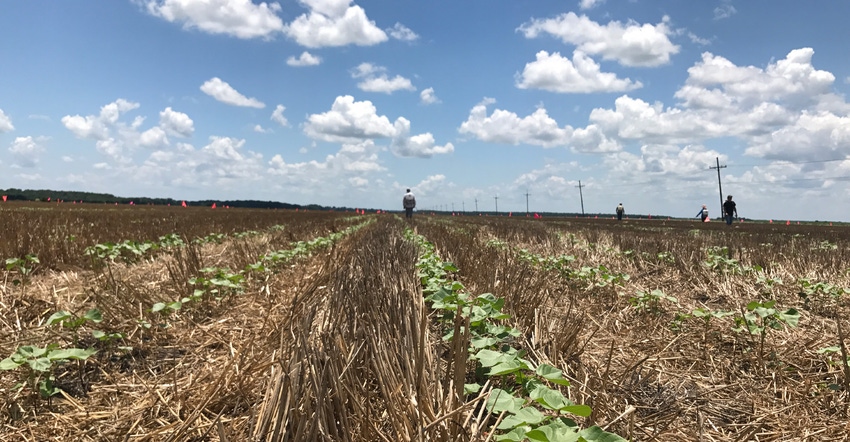
Cotton roots do not grow well in compacted soil and likely will not produce optimum yield and quality.
“Cotton is a deep-rooted plant,” said Brenda Tubana, soil fertility professor, LSU Ag Center, Baton Rouge.
 Brenda Tubana, LSU soil fertility professor. (Photo courtesy of LSU)
Brenda Tubana, LSU soil fertility professor. (Photo courtesy of LSU)
Compacted soil limits how well those roots penetrate, develop and absorb moisture and nutrients, Tubana said during the recent Louisiana Agricultural Technology and Management Conference. The annual conference, sponsored by the Louisiana Crop Consultants Association, offered the sessions by Zoom technology this year because of COVID-19.
Tubana said soil compaction creates multiple challenges for cotton production. “Compaction results in destructed soil aggregation, restricted crop emergence, poor crop stands, restricted root growth and limited uptake of water and nutrients,” she said.
Compacted soil also creates potential for low oxygen and high carbon dioxide levels, limited water movement, increased potential for erosion and runoff, poor crop development and growth, reduced yield, and limited nutrient uptake. “The roots absorption of moisture and nutrients is limited.”
Tubana said essential mineral nutrients, including nitrogen, potassium, phosphorus, calcium, sulfur, iron, zinc and many others, “come from the soil and are absorbed through cotton roots.”
Compaction prevents root penetration, creates “stubby roots,” and reduces the plant’s ability to grow and produce yield goals.

“The effect on the root system underground compromises the growth of the plant above ground,” Tubana said.
A grower’s first chore should be diagnosis. “Check to see if roots are growing horizontally. Use a penetrometer to determine compaction. Also look for abnormal growth and leaf discoloration which could indicate nutrient deficiencies.”
The best management option she said is to “avoid compaction. That should include avoiding tillage operations in wet soil.”
Other practices to minimize compaction include:
Control traffic.
Use tractors with the correct type of tires and proper tire pressure.
Reduce tillage practices.
Manage soil organic matter.
Tubana said producers may mitigate surface compaction by improving organic matter content. Cover crops and residue management are good options.
“Also, break compaction with a subsoiler or inter-row ripper. Plant deep-rooted crops.”
She recommends patience with residue management. “You might not see improvement over night.”
 Cotton plants do not do well in compacted soils. Reduction in root growth inhibits nutrient and moisture uptake, resulting in poor above ground plant growth and potential yield loss. (Photo by Brenda Tubana)
Cotton plants do not do well in compacted soils. Reduction in root growth inhibits nutrient and moisture uptake, resulting in poor above ground plant growth and potential yield loss. (Photo by Brenda Tubana)
She said some nutrients are important to alleviate soil compaction. “We see less impact of soil compaction on root length and total surface area in high-K soils than in low-K soils.”
“Low oxygen levels in soils markedly reduce the plant’s absorption of magnesium. Calcium promotes soil aggregation.”
Tubana recommends producers check cotton for compaction issues in mid-season. “Monitor visual symptoms of nutrient deficiency. If feasible, consider treatment, which depends on growth stage and nutrient mobility in the soil.”
Mitigation may be necessary because cotton does not do well in compacted soil.
Read more about:
Soil CompactionAbout the Author(s)
You May Also Like






